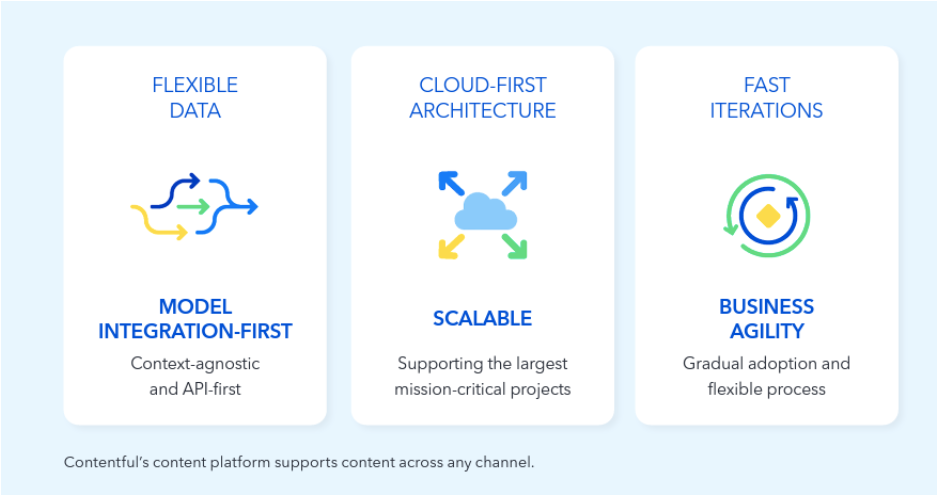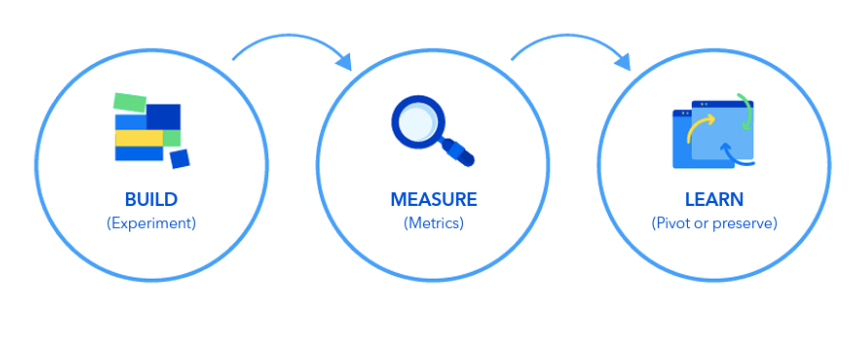
Digital Product Factories
WEB DEVELOPMENT, TRANSFORMATION.
A major shift is occurring in the way companies create websites and other digital products. To gain a competitive advantage, they are moving toward continuous deployment and innovation.
Companies are creating more software than ever before, becoming digital product factories, in order to achieve excellent digital experiences for their customers in an omnichannel world.
These digital products encompass everything from applications, websites and handheld devices to customer touch points that are constantly evolving.
The greatest competitive advantage is achieved by bringing together the previously isolated IT, sales and marketing departments into cross-functional digital teams. The digital factory concept refers to cross-functional collaboration and modular architectures.
Digital products are central components for any business, as they are of great value to the customer. In fact, the future of how to build applications and websites is based on digital “stacks”, not monolithic solutions. Assembling modern stacks of digital experiences means choosing more flexible tools that enhance core capabilities.
Thanks to cloud-based services, a digital experience platform (DXP) makes it easier to decouple services and deploy software on an ongoing basis. Teams can then assemble the specific tools they need for each job.
The digital factory model
The digital factory concept arises from the demand to create new digital products faster. Agile digital teams enable companies to be the first to look for new opportunities.
As Contentful puts it in its article "The rise of the digital factory", all companies are now also digital companies, with their main objective being to create new digital products and experiences as quickly as possible.
Cloud-based software stacks are an important part of the solution. By contracting with an ecosystem of services, digital teams can spend more time focusing on the business value of the company, generating greater impact.
In this model, a digital factory must be created to bring together designers, developers, content creators and other strategic digital collaborators.
What does a digital factory do?
The digital factory model promotes mobility and flexibility, helping to keep companies competitive.
By building a digital stack with the best services for each task, companies can create new products quickly, providing a useful framework where digital teams effectively combine their skills with the new stack, and business units only use what their products require.

Adopting the spirit of the builder
The goal of service-based architecture is that development is continuous, constantly delivering improvements and updates. This requires a paradigm shift in companies regarding what innovation is and how to work to achieve that innovation.
The builder's spirit is an operating philosophy that puts innovation in the hands of those who work with the product on a daily basis: designers, content creators, editors, developers, marketers and strategists, under a parallel work environment.
This philosophy encourages teams to take risks and change quickly when required, thus positioning companies as leaders in emerging markets and new channels.
This innovative spirit also helps to align the organization in a cross-functional collaborative culture.
Thanks to the permission to build and the flexible tools, the builder's spirit creates a wave of low-cost innovation, ensuring that companies are not locked into uncompetitive systems.
How to build a digital factory
Content is the energy that drives a digital factory, because at the heart of digital experiences is content.
With a traditional CMS, teams are forced to push their content into inflexible frameworks. Traditional CMSs do not fit the new digital factory model because they require an additional development layer for creators to modify content, eliminating the benefits of parallel development.
In such cases it is very difficult to migrate and reuse content. Because it is trapped in a monolithic system that mixes content and code, it is almost impossible to use both in other contexts.
The solution to freeing up content is through a content platform that separates the front-end layer from the content and allows development and content teams to work in parallel.
Making the content platform the heart of the digital factory
A content platform is not a CMS, as the platform reshapes how digital teams structure, store and deploy content.
In a content platform, content teams access the content layer through an editing application, which allows them to easily add content, while developers can access it through code, using the language of their choice. In this way, teams can work in parallel.
A content platform with APIs turns content into an element that can be reused across products, teams and channels.
Key lessons from the digital factory transformation
Building a digital factory requires planning and time. As such, here are some key lessons to keep in mind:
Have a plan to lay the groundwork: The digital stack, as well as organizational change, requires investment to achieve agile speed. Therefore, planning must involve the stakeholders who will be part of the digital factory.
Thinking differently about software delivery: Everything should be focused on making continuous and incremental changes, not on making big launches: This will require new expectations from managers, plus a different approach to planning, setting milestones and shorter cycles, so that corrections can be made at each stage rather than at the end.

Expand the builder's spirit: This spirit should also be applied to the technology stack, encouraging the testing of various integrations, thus freeing the company from the responsibility of building or buying the "perfect platform".
This paradigm shift will likely require persuading procurement and finance colleagues about how a large contract with a monolithic software can be riskier than having small contracts with a plurality of companies providing the best services.
Looking to the future
The digital factory is the central part of the digital strategy of companies seeking to continuously deliver digital products. This means adopting tailored services as part of a modern DXP, with its effects being very important in promoting organizational cultural change as it shifts to a model where delivery is faster.
Adopting a content platform as a key enabler of the digital factory will serve to more quickly create, code and deploy content of greater relevance to customers.
Enabling experimentation will lead to bolder, more interesting and fresh digital products.
In conclusion, there is no single recipe to follow, because the digital factory must be molded to the situation of each company. In other words, it is a challenge of adaptation to build an optimized digital factory. Even if it works well, it will never be completely finished.
If you have questions about your digital strategy and require expert advice for your modern web projects, we invite you to contact us.